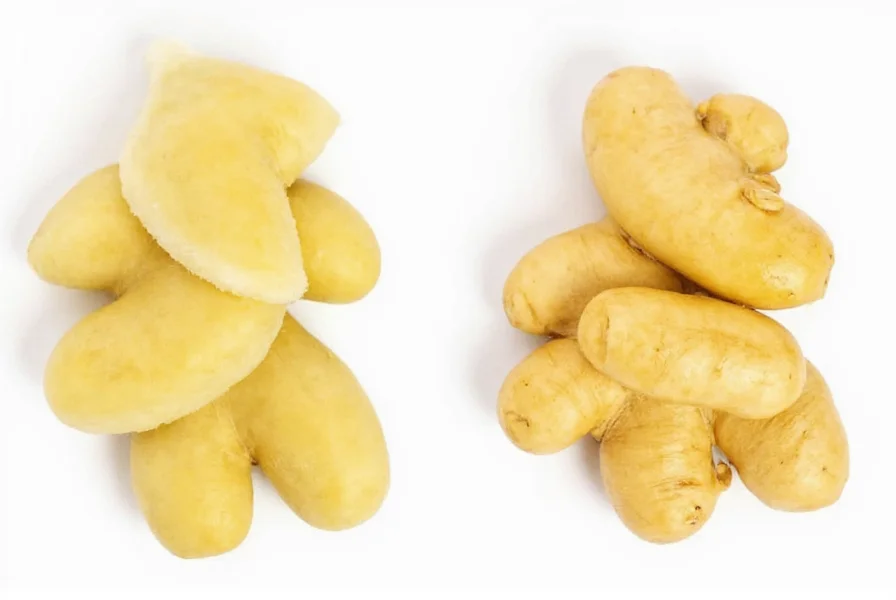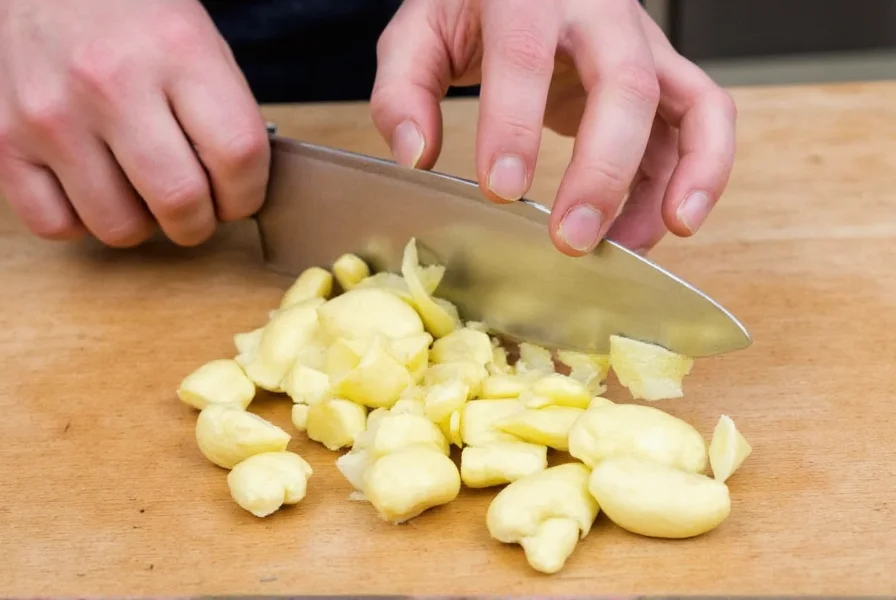Many home cooks unnecessarily spend time peeling ginger before using it in recipes, but culinary experts and food scientists agree that peeling isn't required for most applications. The decision to peel or not depends on several factors including the ginger's freshness, your recipe requirements, and personal preference.
Why Peeling Ginger Is Usually Unnecessary
Ginger skin is thin, tender, and completely edible when the root is fresh. Unlike thicker-skinned produce like potatoes or carrots, ginger's outer layer doesn't contain bitter compounds or tough fibers that would negatively affect your dish.
According to food safety guidelines, the skin of ginger contains concentrated levels of beneficial compounds including gingerols and shogaols - the very compounds responsible for ginger's distinctive flavor and health benefits. Removing the skin means losing some of these valuable nutrients.

When You Might Want to Peel Ginger
While peeling isn't necessary for most applications, there are specific situations where removing the skin might be preferable:
- Older or dried ginger: As ginger ages, the skin can become tougher and more fibrous
- Delicate dishes: For recipes where texture is critical like clear consommés or refined sauces
- Visual presentation: When serving raw ginger where appearance matters
- Organic concerns: If using non-organic ginger with potential pesticide residues
Proper Technique for Cleaning Unpeeled Ginger
If you decide to keep the skin on, proper cleaning is essential. Here's the recommended method:
- Rinse the ginger root under cool running water
- Use a soft vegetable brush to gently scrub the surface
- Pay special attention to crevices where dirt may accumulate
- Rinse thoroughly until water runs clear
- Pat dry with a clean towel before grating
| Method | Time Required | Waste Produced | Flavor Impact |
|---|---|---|---|
| Peeling before grating | 2-3 minutes | 15-20% of ginger lost | Slightly milder flavor |
| Grating with skin on | 30-60 seconds | Negligible waste | Fuller, more complex flavor |
Best Tools for Grating Ginger (With or Without Peel)
Certain kitchen tools work better than others when grating ginger with the skin on:
- Microplane grater: Creates the finest texture and handles skin effortlessly
- Fine box grater: Works well but requires more pressure
- Ginger scraper: Specialized tool that removes minimal material while cleaning
- Food processor: Less ideal as it can make ginger too watery
Food Safety Considerations
When using ginger with the skin on, proper handling is crucial for food safety. Recommendations include:
- Always wash ginger thoroughly before use
- Store ginger properly to prevent mold growth
- Discard ginger if you notice any mold spots
- Use clean utensils and cutting boards to prevent cross-contamination
Flavor and Nutritional Differences
Research shows that ginger skin contains higher concentrations of certain beneficial compounds compared to the inner flesh. By keeping the skin on, you preserve:
- Up to 20% more gingerols (the primary bioactive compounds)
- Additional dietary fiber
- Trace minerals concentrated near the skin
- Essential oils that contribute to ginger's aroma
Time-Saving Ginger Preparation Methods
For busy cooks, skipping the peeling step offers significant time savings. Consider these efficient techniques for how to grate ginger with skin on:
- Freeze whole ginger roots, then grate frozen (skin comes off more easily)
- Use a spoon to quickly scrape off any stubborn bits of skin
- Keep a small bowl of water nearby to rinse the grater periodically
- Prepare larger quantities at once and store grated ginger in the freezer

When Peeling Might Be Worth the Effort
While generally unnecessary, there are legitimate reasons to peel ginger in certain situations. For those wondering if you need to peel ginger before grating for specific applications:
- For candied ginger: The skin can become tough during the candying process
- For ginger tea: Some prefer the smoother texture of peeled ginger in beverages
- For sensitive palates: Children or those with digestive sensitivities might prefer peeled ginger
- For presentation: In fine dining settings where visual perfection matters
Conclusion: The Practical Approach to Ginger Preparation
For most home cooking applications, peeling ginger before grating is an unnecessary step that wastes time and valuable nutrients. By simply scrubbing fresh ginger thoroughly and grating it with the skin on, you'll save time, reduce food waste, and potentially enhance both the flavor and nutritional profile of your dishes.
Develop your own judgment based on the specific recipe, the freshness of your ginger, and your personal preferences. As with many kitchen "rules," the practice of peeling ginger before use is more tradition than necessity in most cases. Understanding whether to peel ginger before grating can transform your cooking efficiency while maximizing flavor and nutrition.
Frequently Asked Questions
Is ginger skin safe to eat when grating?
Yes, ginger skin is completely safe to eat when properly cleaned. The skin contains concentrated beneficial compounds and is thin enough that it doesn't affect texture in most recipes. Just make sure to scrub the ginger thoroughly under running water before use.
How do you clean ginger without peeling it?
To clean ginger without peeling, rinse it under cool running water while using a soft vegetable brush to gently scrub the surface. Pay special attention to crevices where dirt may collect. Rinse thoroughly until the water runs clear, then pat dry with a clean towel before grating.
Does unpeeled ginger taste different than peeled ginger?
Unpeeled ginger has a slightly more complex flavor profile as the skin contains higher concentrations of certain compounds. Some people detect a marginally stronger, more robust flavor when using unpeeled ginger, but the difference is subtle in most cooked dishes. In raw applications, the texture difference may be more noticeable.
Can you freeze ginger and grate it with the skin on?
Yes, freezing ginger is actually an excellent technique. Frozen ginger becomes firmer, making it easier to grate with the skin on. The cold temperature also helps prevent the ginger from becoming too fibrous during grating. Simply remove from freezer, grate immediately while still frozen, and return any unused portion to the freezer.
Does grating ginger with skin on affect digestion?
For most people, grating ginger with the skin on doesn't negatively affect digestion and may actually provide additional dietary fiber. However, individuals with sensitive digestive systems or certain medical conditions might prefer peeled ginger as the skin contains slightly more fiber which could cause discomfort in sensitive individuals.











 浙公网安备
33010002000092号
浙公网安备
33010002000092号 浙B2-20120091-4
浙B2-20120091-4